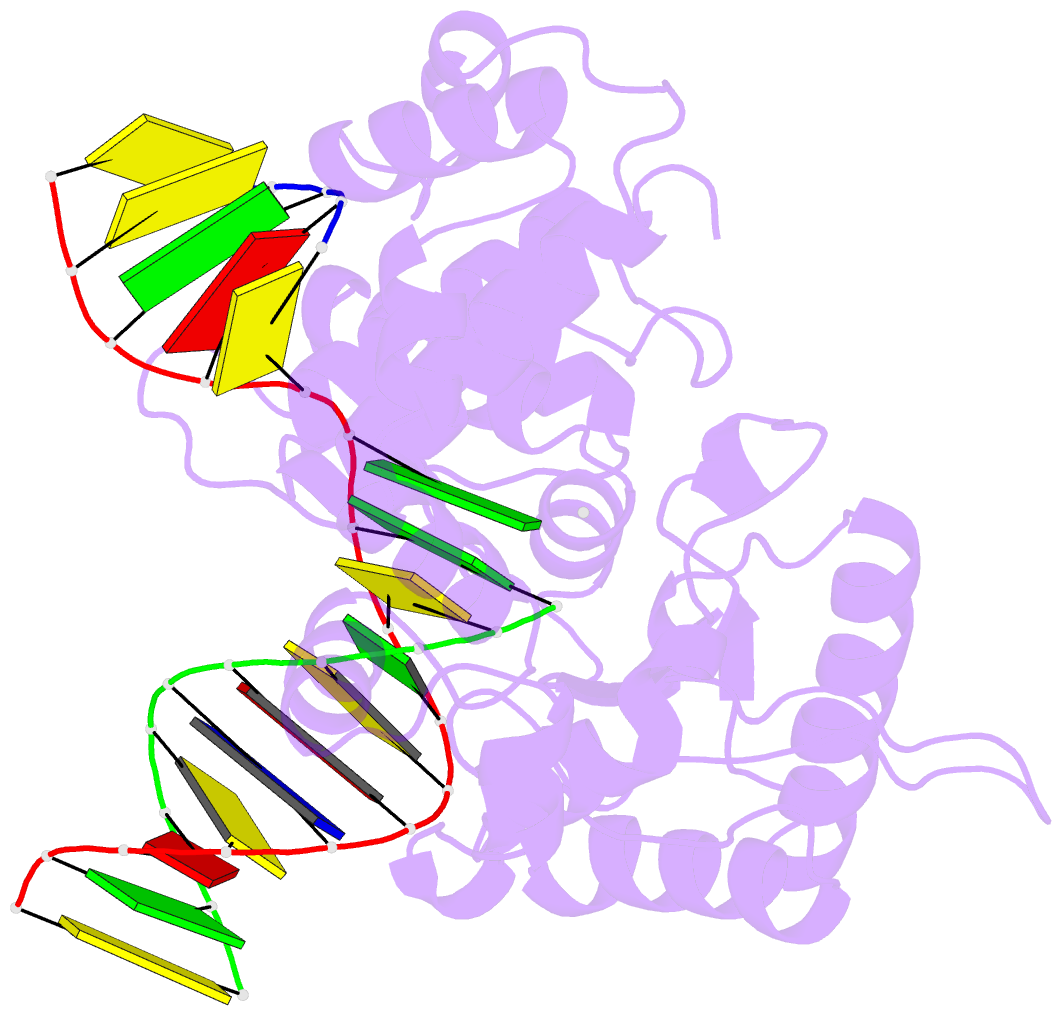Summary information and primary citation
- PDB-id
- 1bpy; SNAP-derived features in text and JSON formats;
DNAproDB
- Class
- transferase-DNA
- Method
- X-ray (2.2 Å)
- Summary
- Human DNA polymerase beta complexed with gapped DNA and ddctp
- Reference
- Sawaya MR, Prasad R, Wilson SH, Kraut J, Pelletier H (1997): "Crystal structures of human DNA polymerase beta complexed with gapped and nicked DNA: evidence for an induced fit mechanism." Biochemistry, 36, 11205-11215. doi: 10.1021/bi9703812.
- Abstract
- DNA polymerase beta (pol beta) fills single nucleotide (nt) gaps in DNA produced by the base excision repair pathway of mammalian cells. Crystal structures have been determined representing intermediates in the 1 nt gap-filling reaction of pol beta: the binary complex with a gapped DNA substrate (2.4 A resolution), the ternary complex including ddCTP (2.2 A), and the binary product complex containing only nicked DNA (2.6 A). Upon binding ddCTP to the binary gap complex, the thumb subdomain rotates into the closed conformation to contact the otherwise solvent-exposed ddCTP-template base pair. Thumb movement triggers further conformational changes which poise catalytic residue Asp192, dNTP, and template for nucleotidyl transfer, effectively assembling the active site. In the product nicked DNA complex, the thumb returns to the open conformation as in the gapped binary DNA complex, facilitating dissociation of the product. These findings suggest that pol beta may enhance fidelity by an induced fit mechanism in which correct base pairing between template and incoming dNTP induces alignment of catalytic groups for catalysis (via thumb closure), but incorrect base pairing will not. The structures also reveal that pol beta binds both gapped and nicked DNA with a 90 degrees kink occurring precisely at the 5'-phosphodiester linkage of the templating residue. If the DNA were not kinked in this way, contact between the thumb and dNTP-template base pair, presumably important for the checking mechanism, would be impossible, especially when the gap is but a single nucleotide. Such a 90 degrees kink may be a mechanistic feature employed by any polymerase involved in filling gaps to completion.





